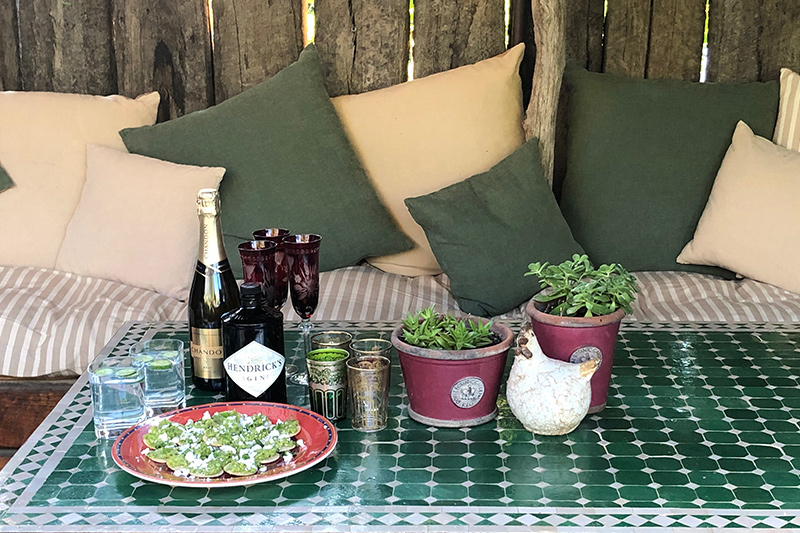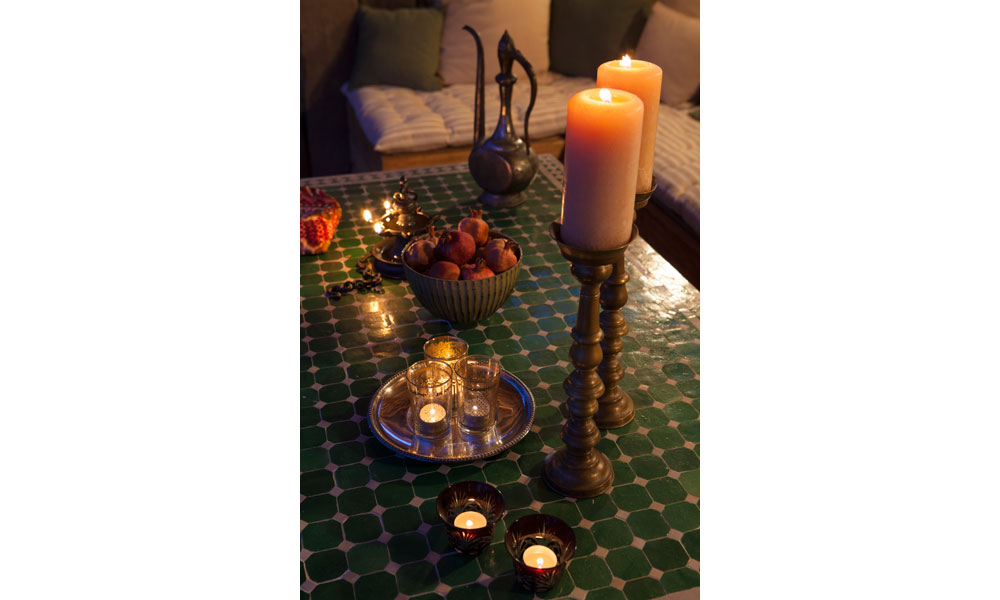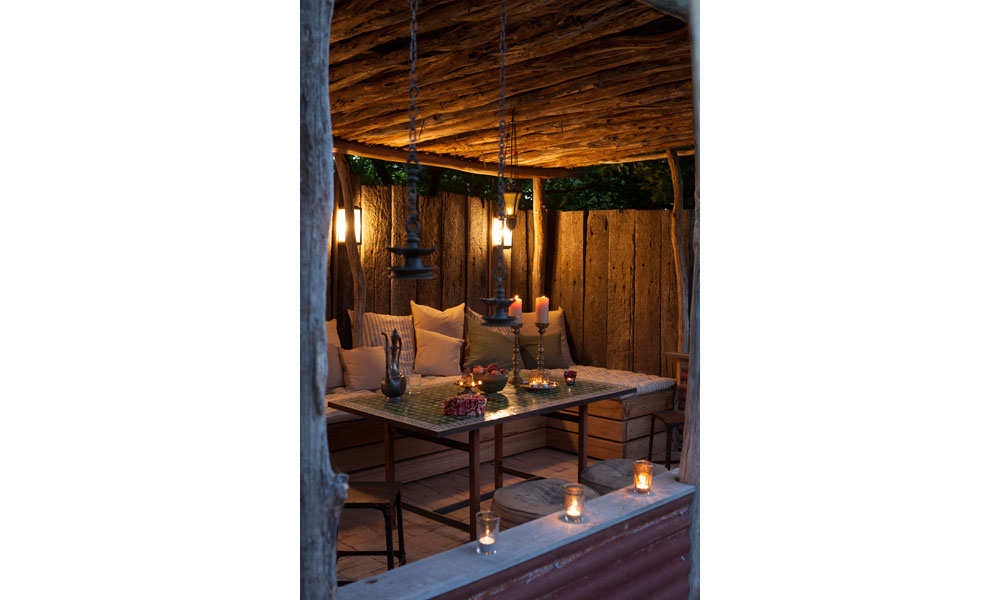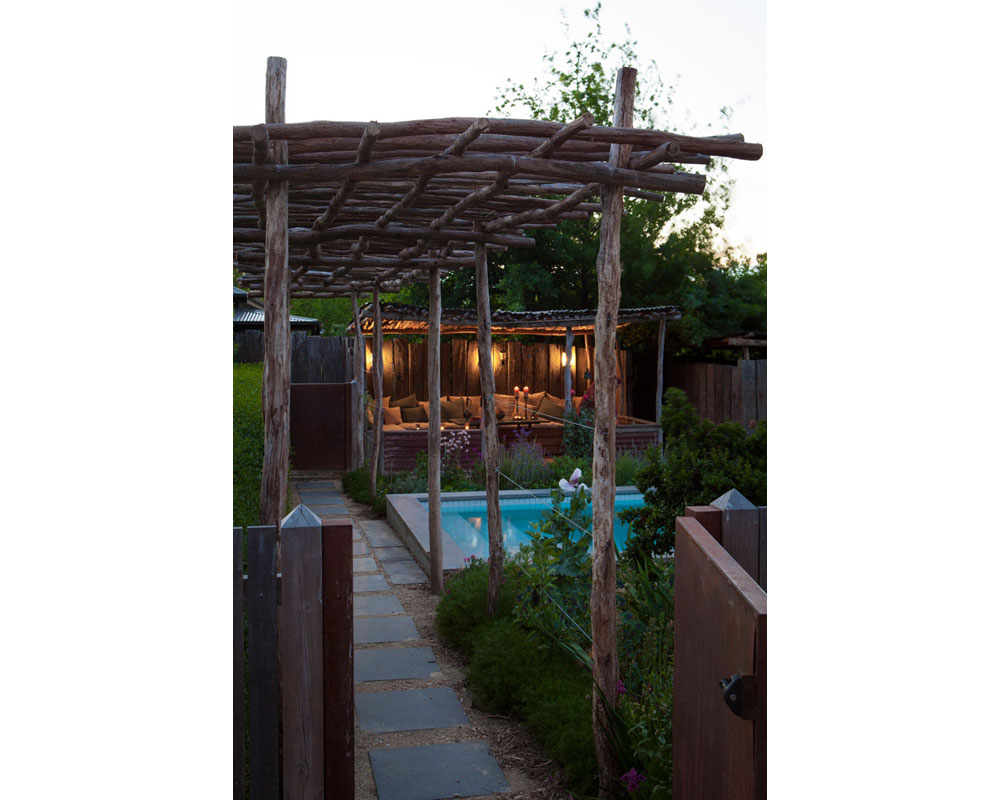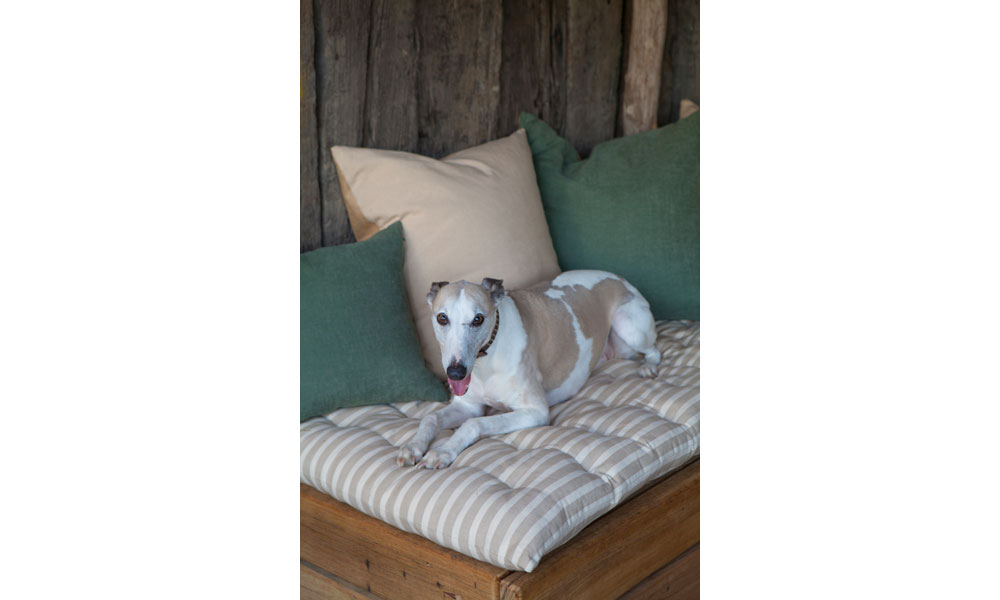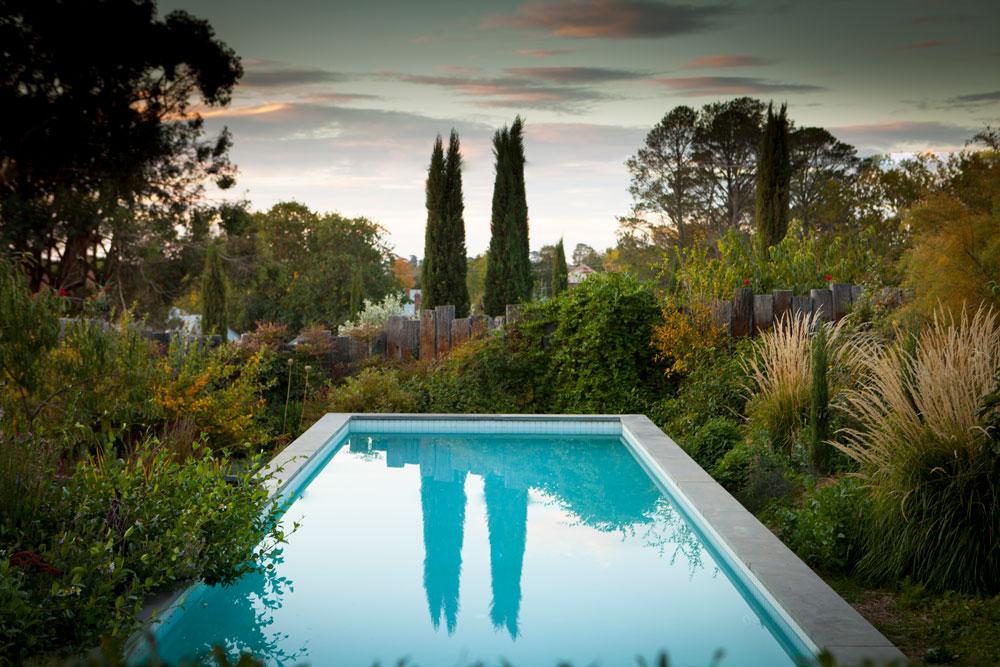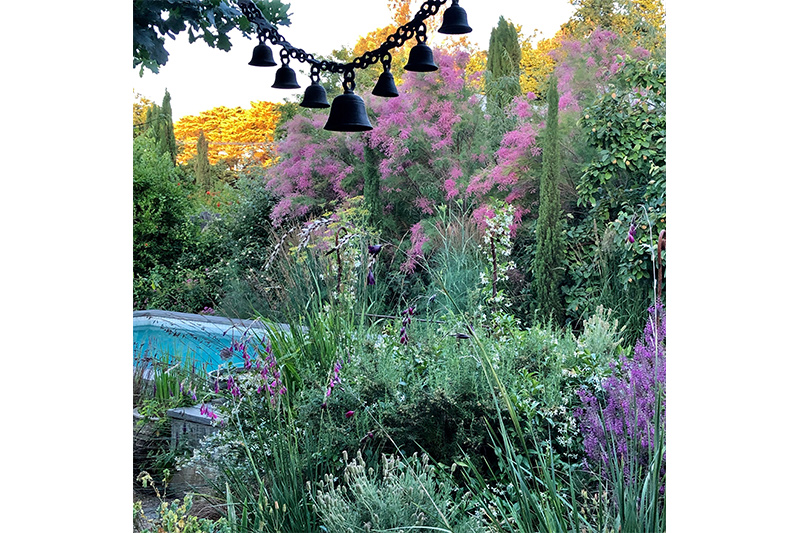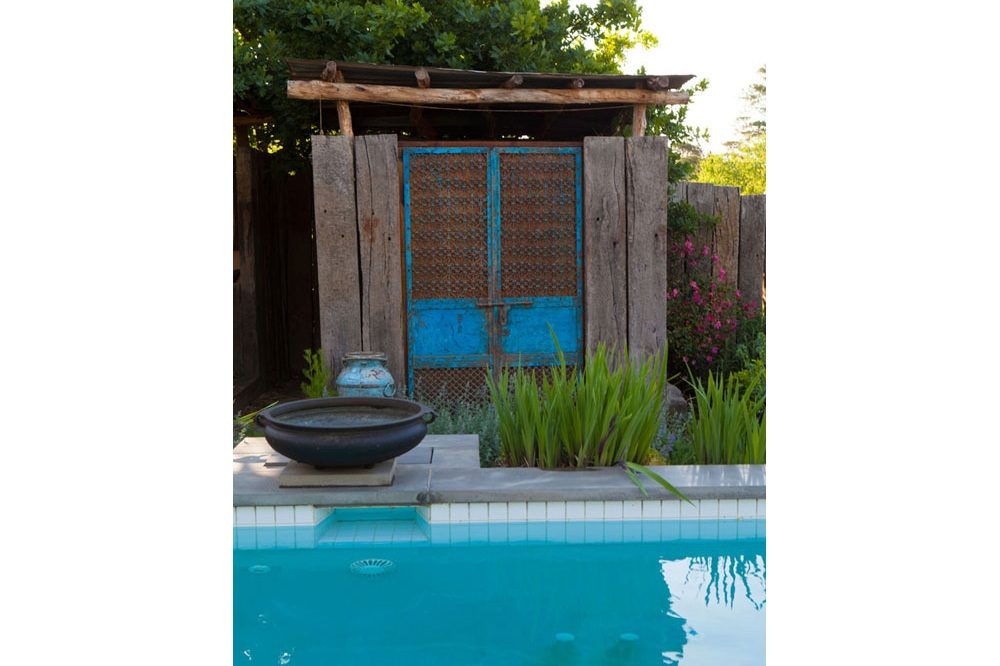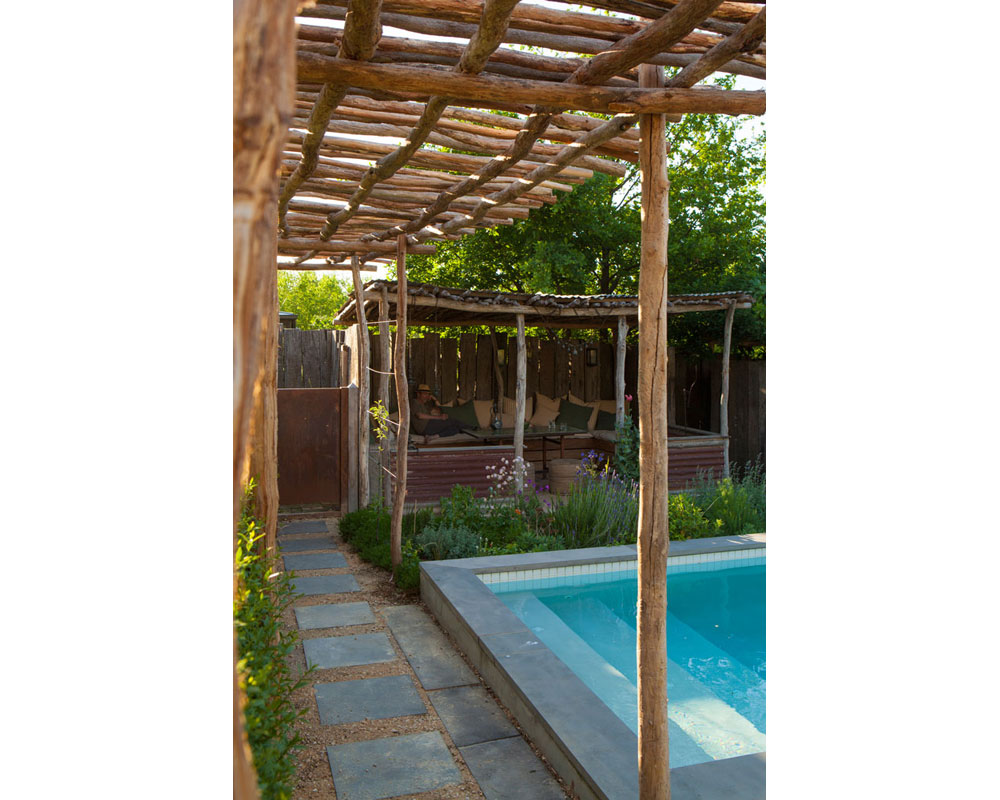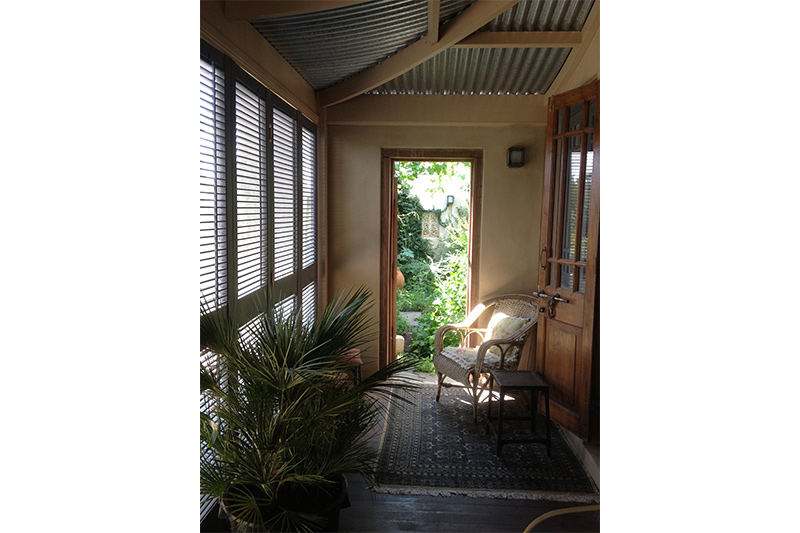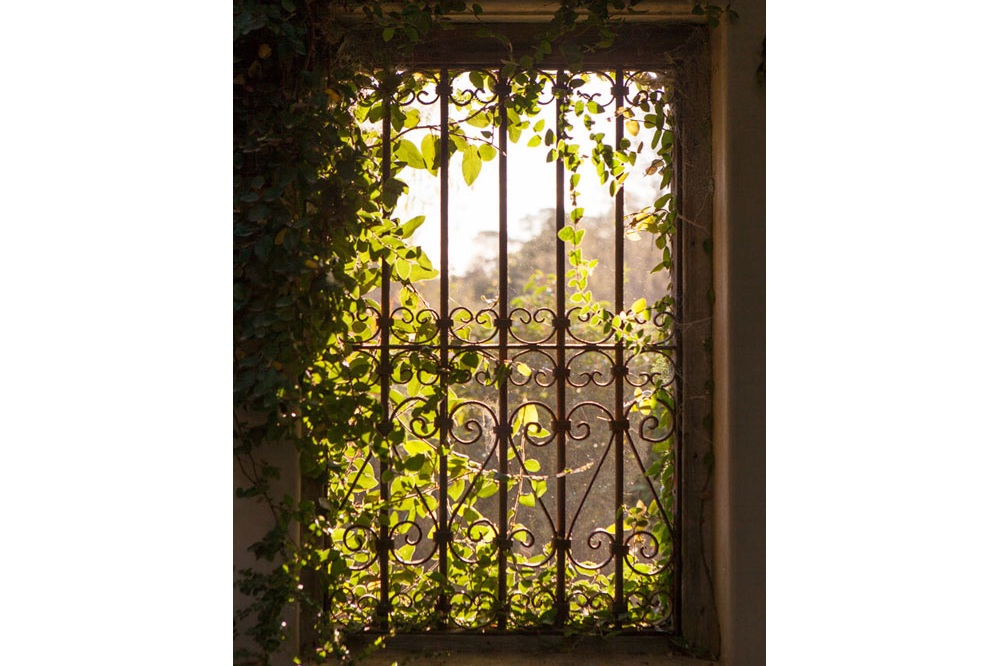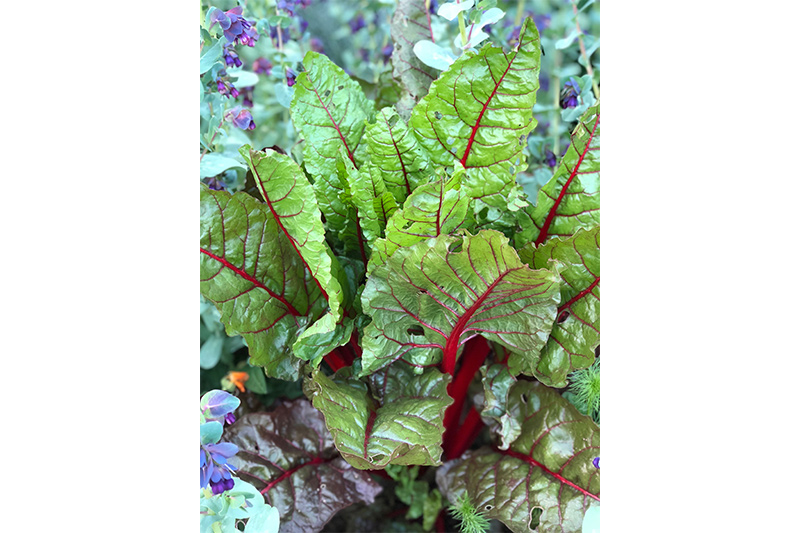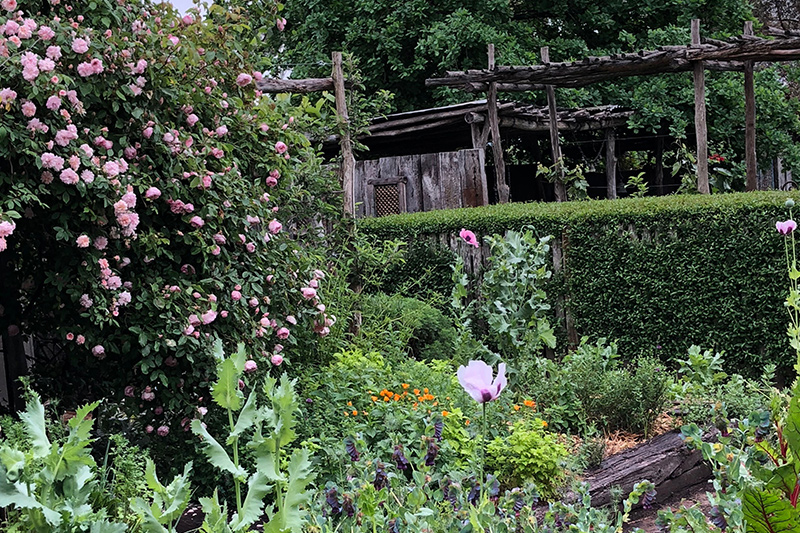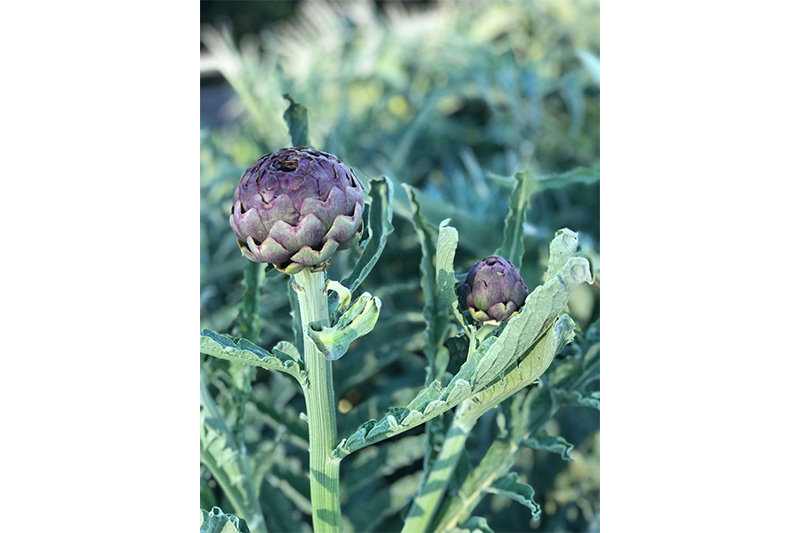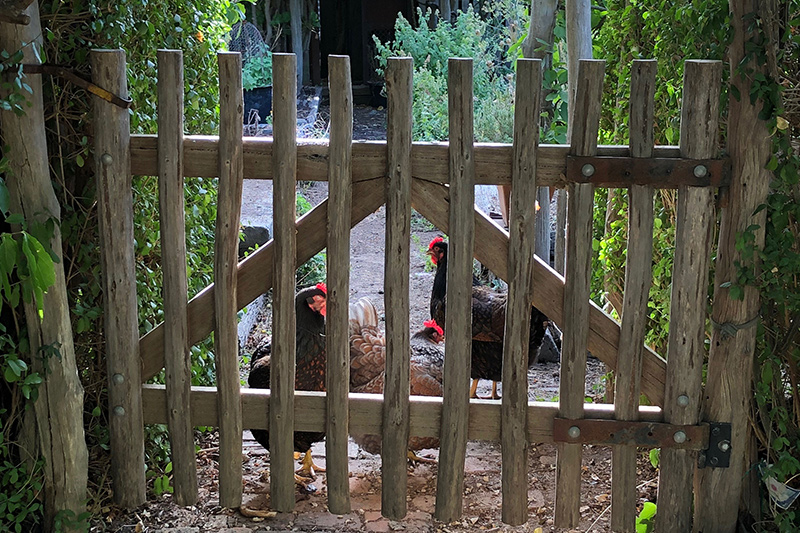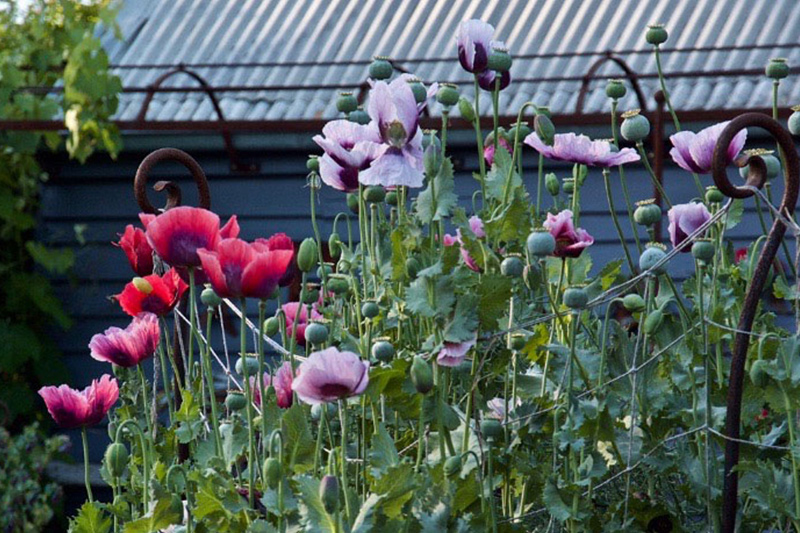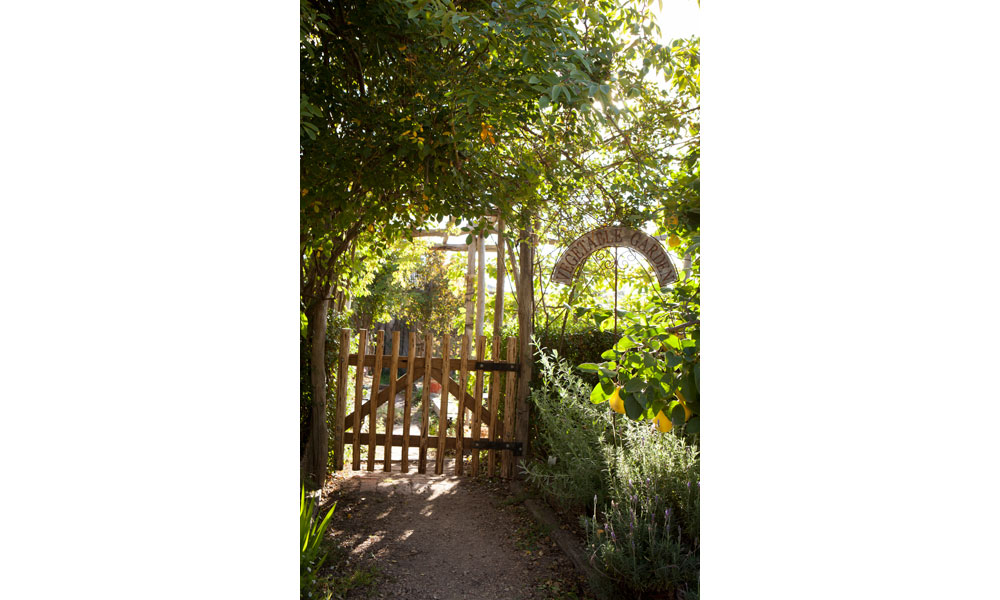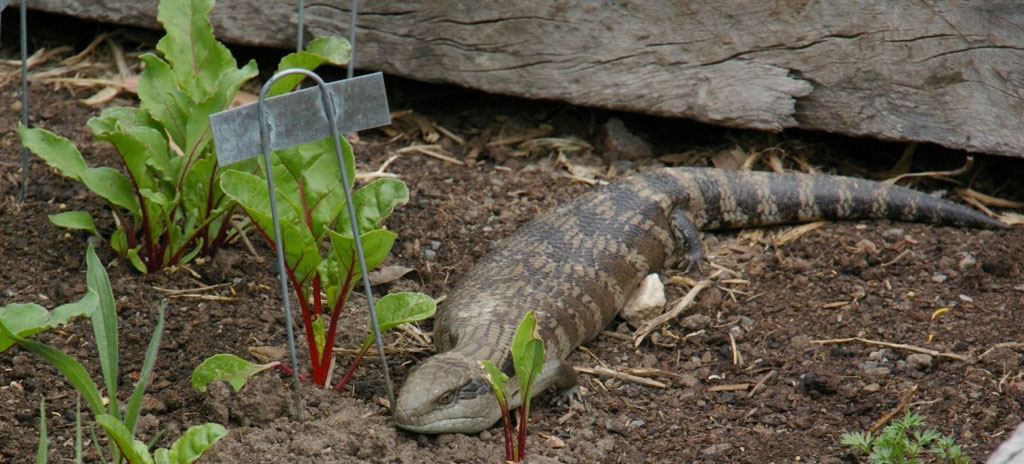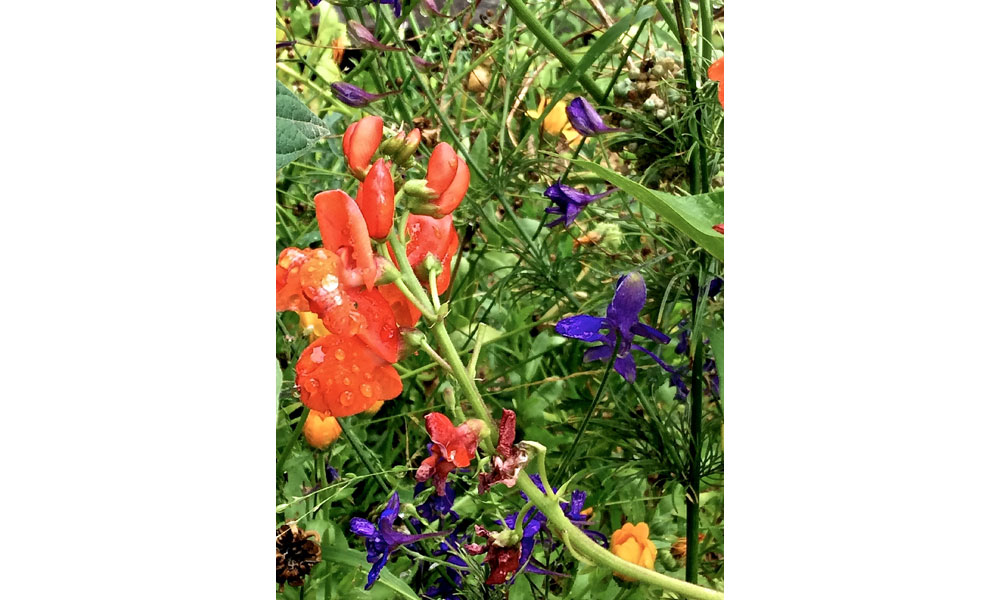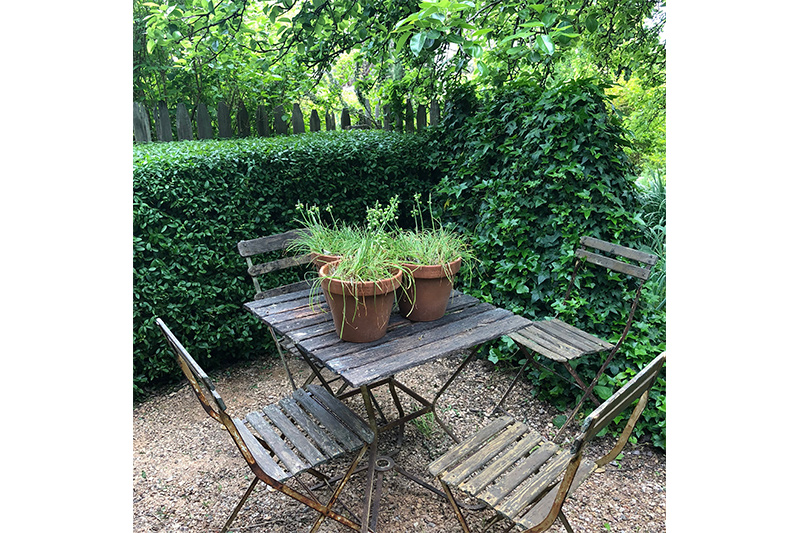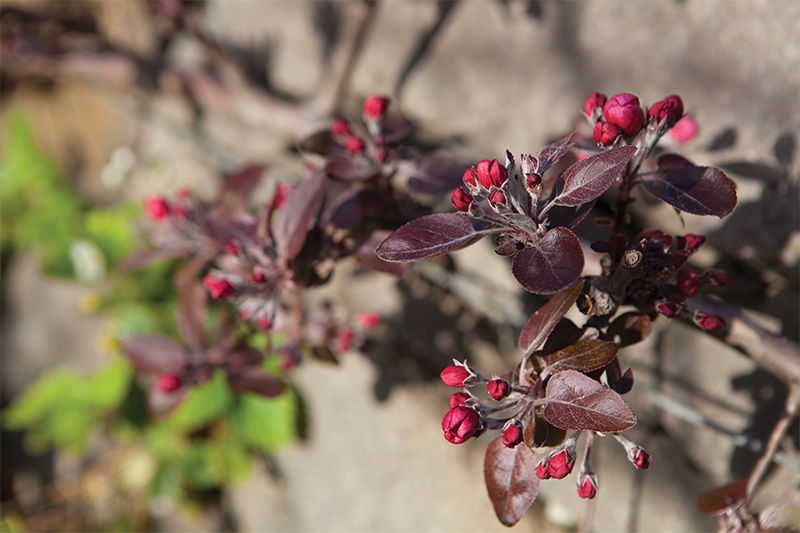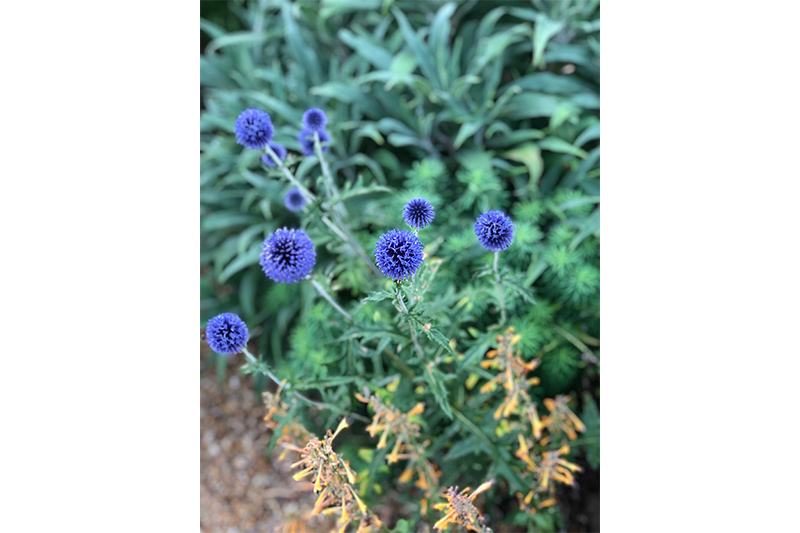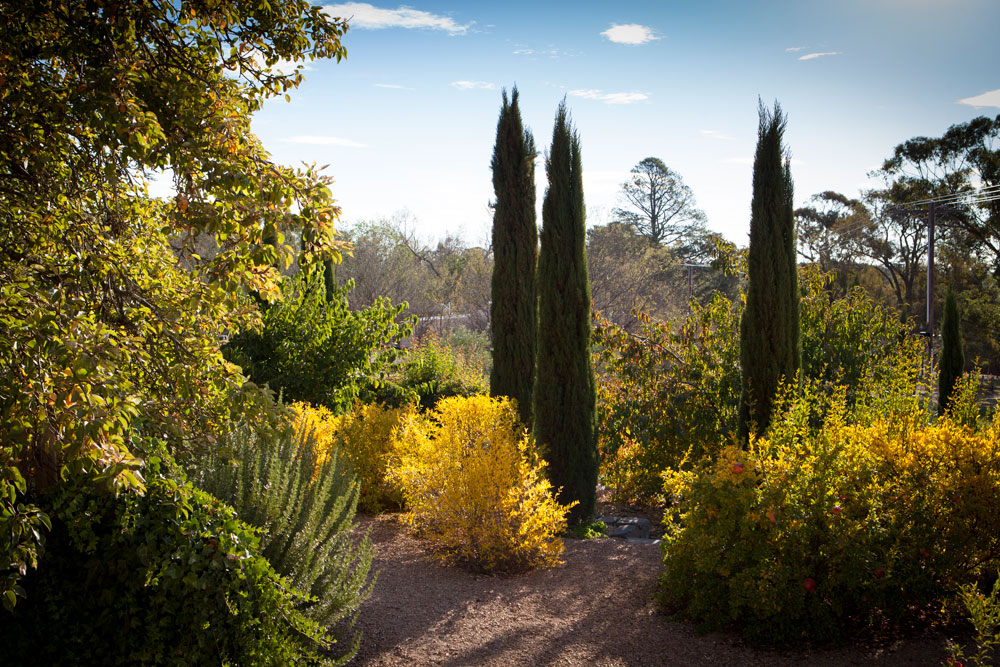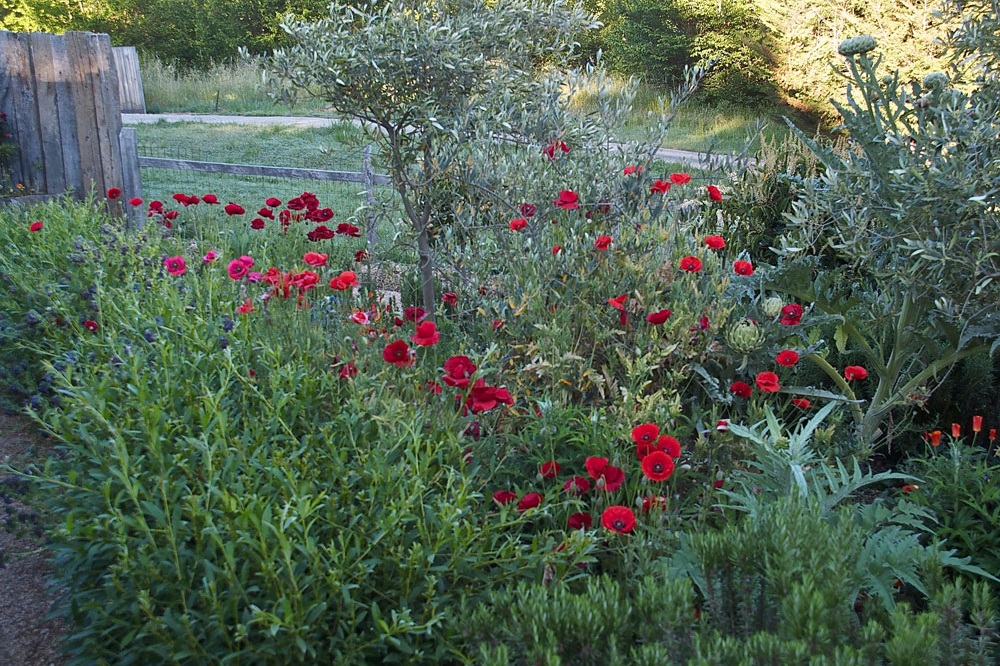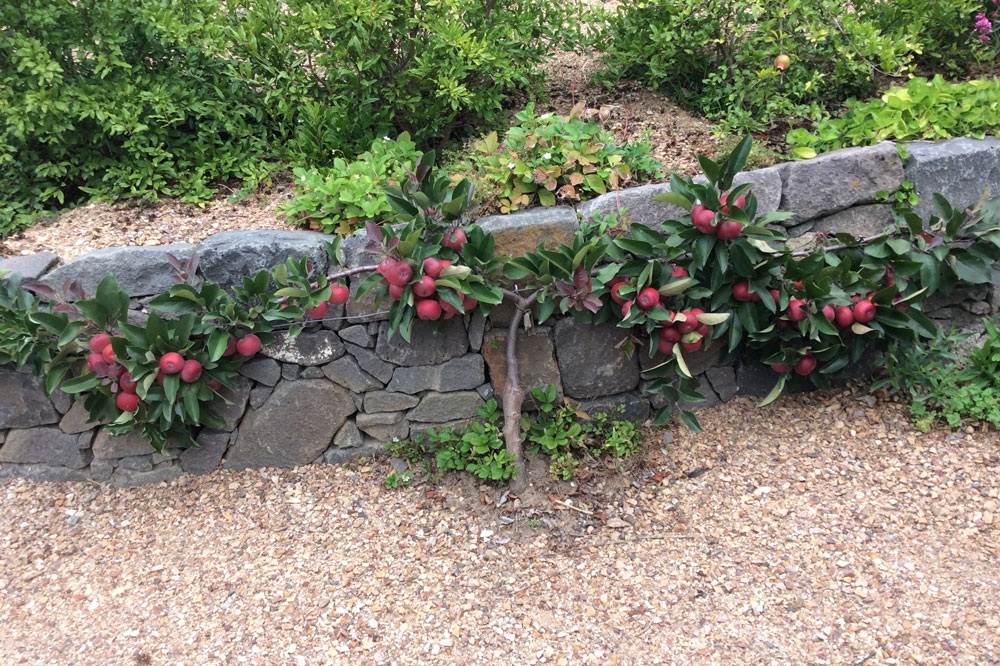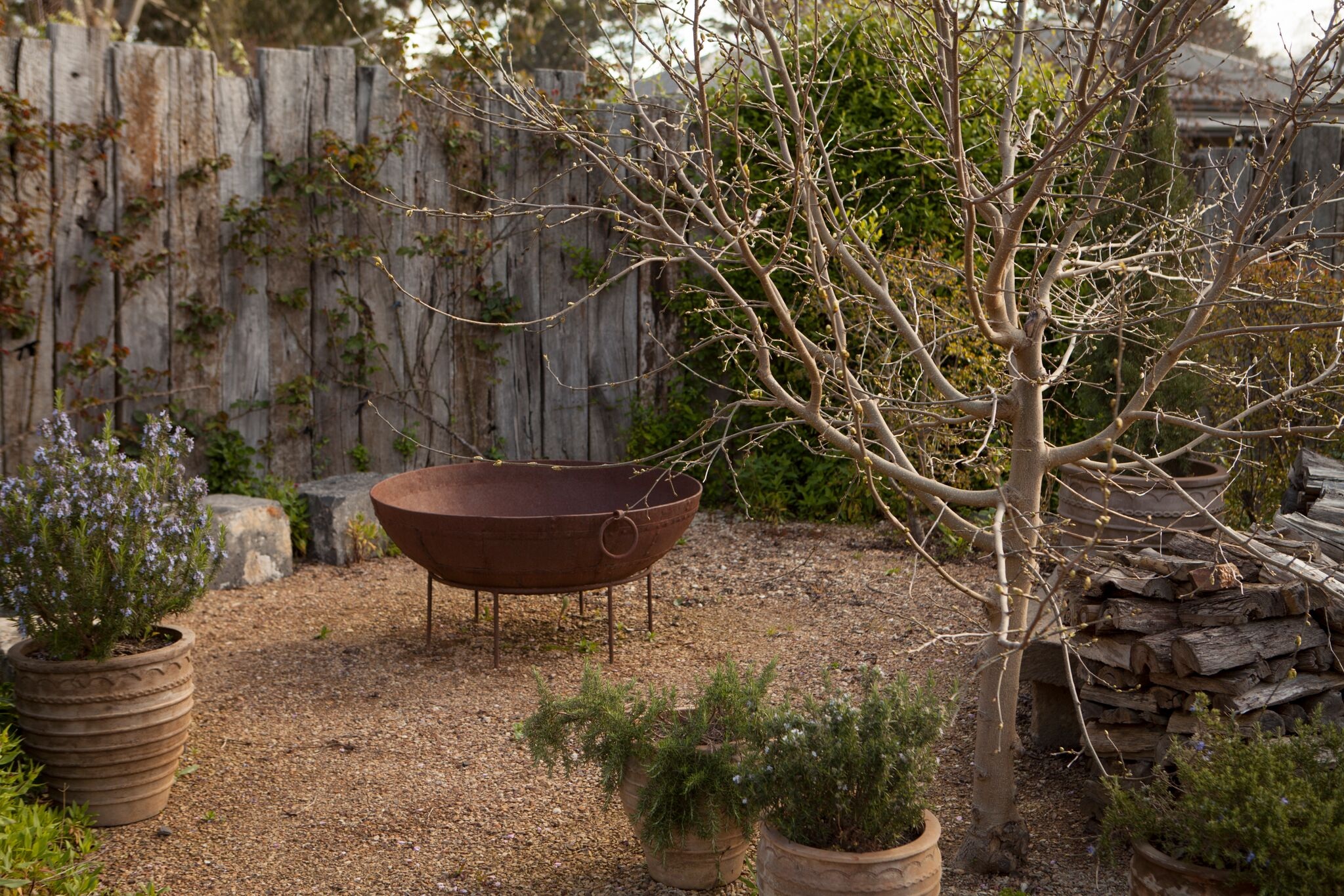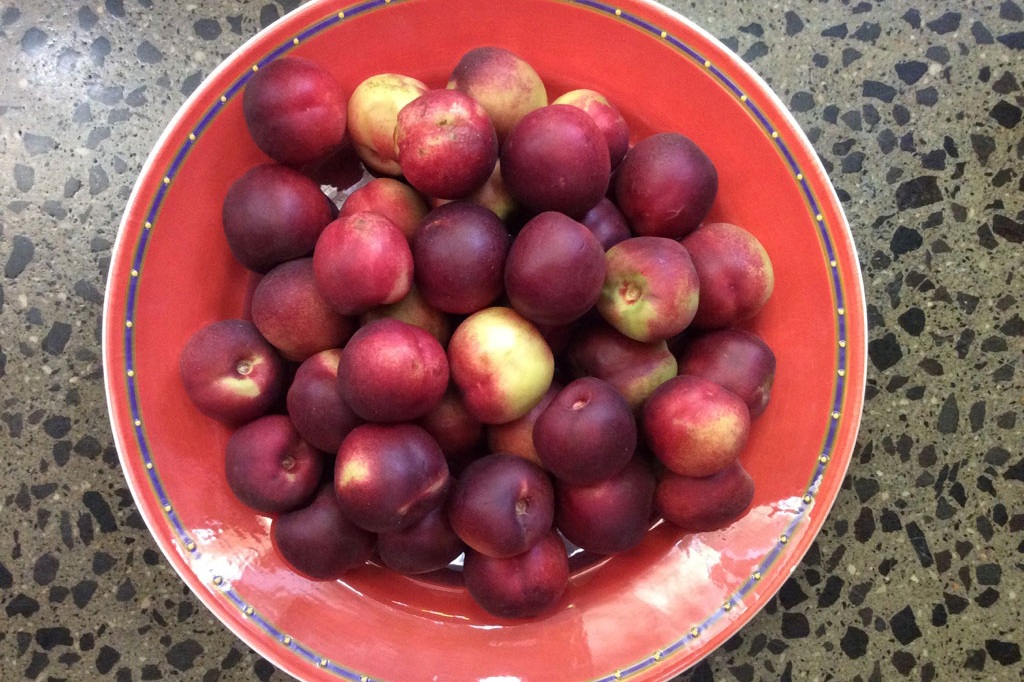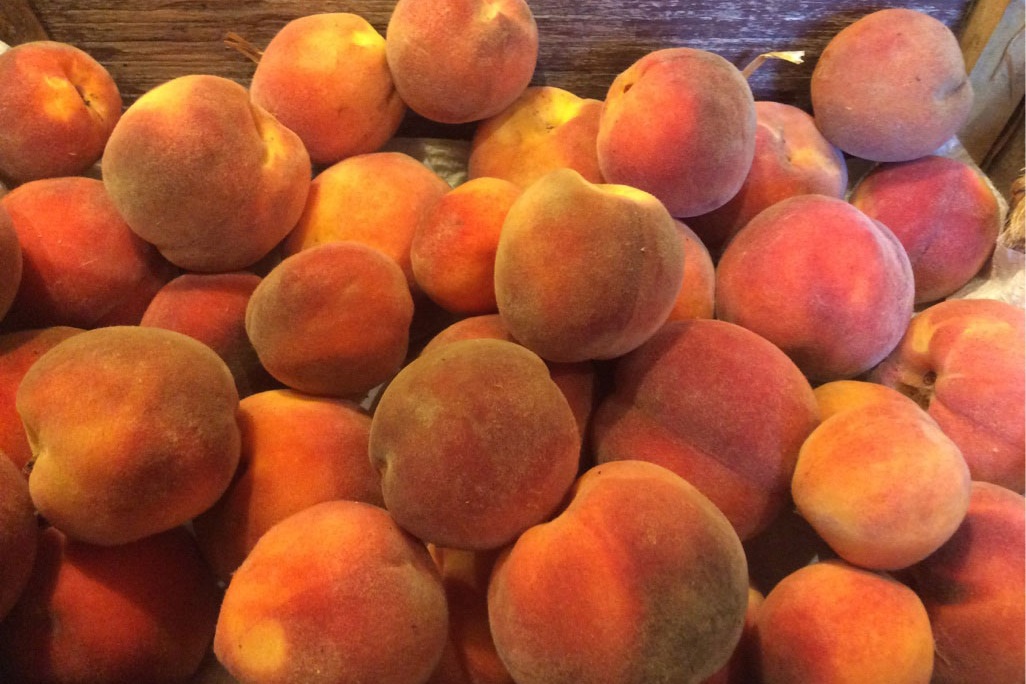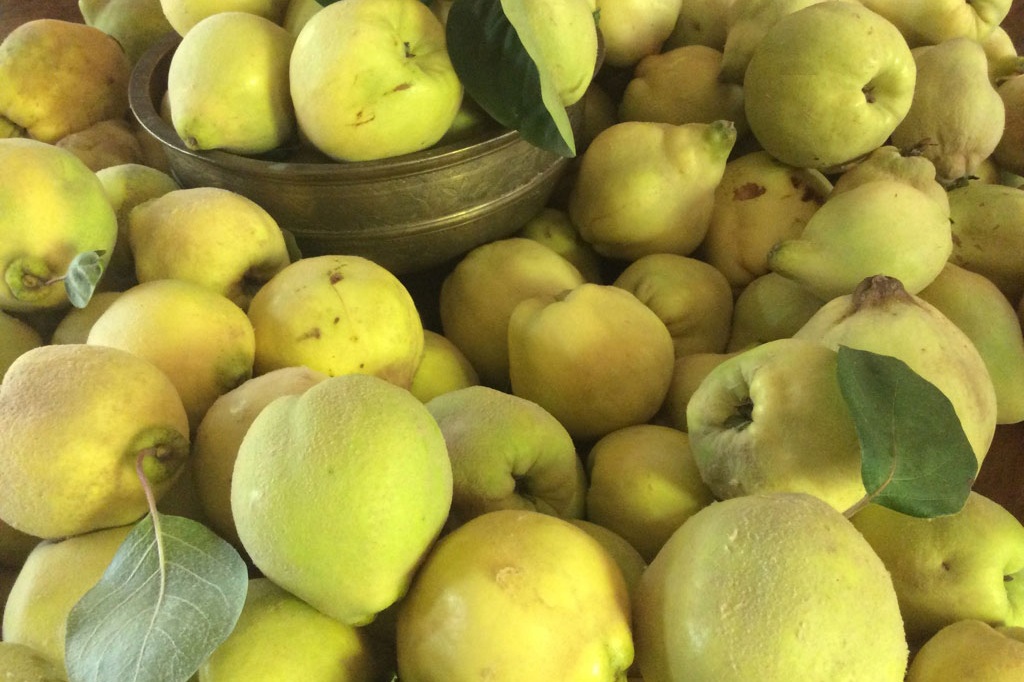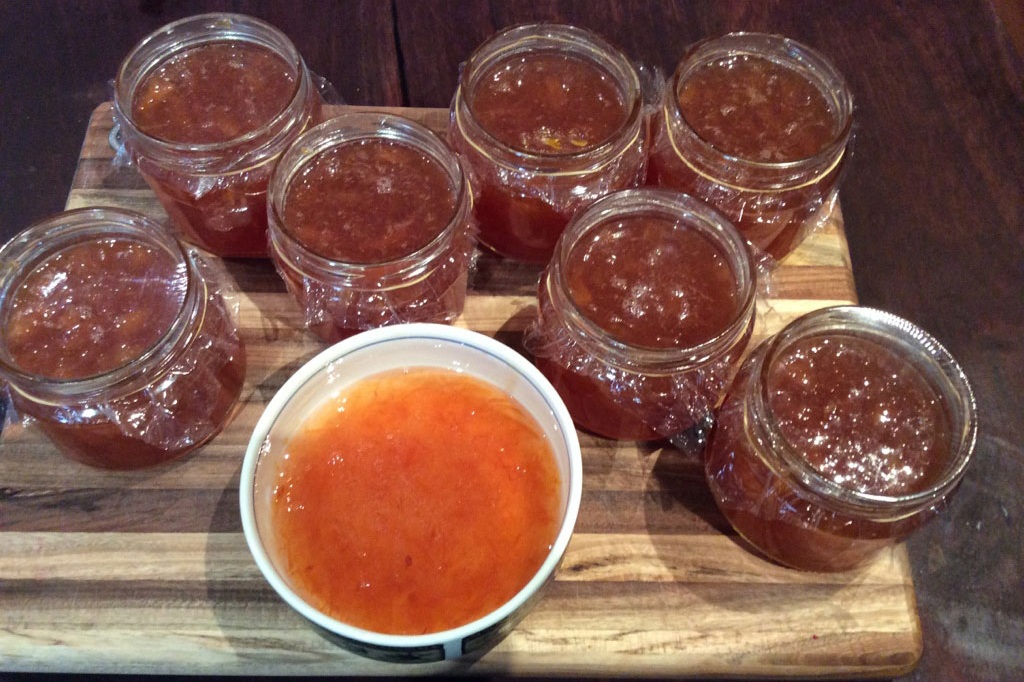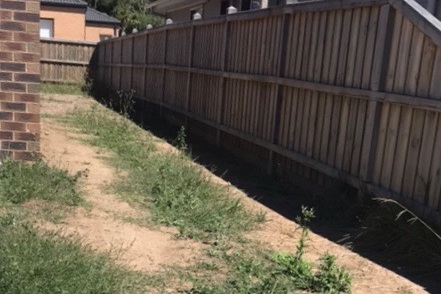Garden gallery
Pool shed
The shed was inspired by the hay sheds of Central Victoria. The structure uses bush poles, recycled sleepers from the railways, recycled corrugated iron (including from an original stables on the property), and recycled bricks. The interior reflects a Middle Eastern theme, with a table designed to specification from Morocco, designed striped mats and cushions, and Middle Eastern & Indian artifacts. It is used to relax by the pool during the day and as an entertainment space in the evening. The shed was featured in “Shed” by garden photographer Simon Griffiths.
Pool
The aim was to integrate the pool into the garden landscape to create the sense of a pond instead of a traditional formal pool separated by paving from any garden elements. Plantings go up to and over the side of the pool and incorporate grasses to help create the feel of a natural water feature. In another departure from traditional pool design, the garden includes many productive elements – espaliered Apples (Malus domestica), a Nectarine (Prunus persica nucipersica) and Quinces (Cydonia oblonga), as well as perennials, Tamarisk (Tamarix ramosissima) and Myrtle (Luma apiculata) trees. Recycled sleepers form the northern wall and decorative iron doors from India provide a feature at the front of the equipment area.
Courtyard
The courtyard around the living and dining areas has been designed to provide shade from the western and northern sun for the house in summer, and light in winter. Grape vines (Vitis vinifera spp) are trained along a pergola that stretches across the courtyard so that there is a canopy of leaves (and grapes) in summer, allowing the doors of the house to be left open for breezes and fresh air. Fragrance comes from the Star Jasmine (Trachelospermum jasminoides) and citrus flowers. The design is Mediterranean with iron windows from Turkey, a Tuscan gravel surface and pots of citrus. A fish pond sits in the centre and helps create a feeling of coolness during summer.
Vegetable garden
An old lean-to kitchen cottage was relocated from the bluestone house to the far corner of the property to use as a gardeners’ shed for planning and contemplating. This provided an opportunity to create a vegetable garden in front of the cottage as if it were an independent living space with its garden. The design references colonial gardens from Cottage Gardens in Australia by Peter Cuffley, who notes that the emphasis was on foodstuffs and flowers, representing the first foothold of self-sufficiency in what seemed a hostile land. Four beds are bordered on two sides by espaliered apples and the entire garden is enclosed. A rose arbour entrance leads into the vegetable garden with Privet (Ligustrum ovalifolium) hedging on either side. The pathways have been made from recycled bricks from the original chimney attached to the cottage.
Chicken house and run
A chicken house offers the opportunity to be inventive and have some fun. The chicken house has a similar pitch to the garden cottage at right angles to it and is set at a level to allow storage underneath. Fruit trees were established in the enclosed run before the chickens were introduced, to create shade and also for access by the chickens to fallen fruit. Our Barnevelder chicken family seem to be enjoying life here and have expanded their territory to the vegetable garden!
Terrace
A large uneven and sloping paddock was terraced with low bluestone retaining walls to integrate with the bluestone cottage. A Mediterranean aesthetic was sought, with gravelled pathways, Pencil Pines (Cupressus sempervirens ‘Glauca’), Oleaster (Eleangus x ebbingii), Rosemary (Rosmarinus officinalis) and Pride of Madeira (Echium candicans ‘Colbalt Towers’), but also productive plants including Pistachios (Pistacia vera), Himalayan White Mulberry (Morus macroura), Artichokes (Cynara scolymus) and Cardoons (Cynara scolymus) and Pomegranate (Punica granatum) hedges.
Produce
And of course, by definition a key advantage of a productive garden is the produce!
A before and after
This Woodend garden was planted early November and has thrived through the dry summer.



